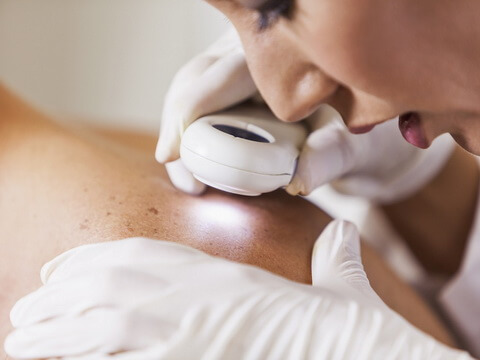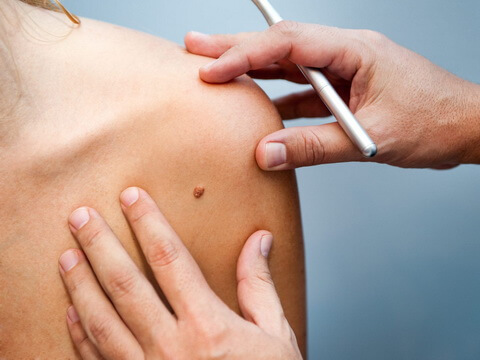Moles are usual and normal skin changes.
They often look like small dark brown spots. They are formed by the association of clusters of pigment cells. Moles usually appear in childhood and adolescence. Most people have 10 to 45 moles, almost all of which appear before the age of 40. They can occur on all parts of the body, neck, arms, legs, torso and head. Some moles may fade and disappear over a lifetime. The number of moles are influenced by genetic predispositions and the frequency of exposure to UV rays.
Typically, a mole is a brown spot on the skin. However, they can be of different colors, shapes, sizes and textures. The characteristics of the mole can change during life.
Most of the moles are harmless. Rarely, they become cancerous lesions.
Monitoring of moles and other pigment changes is an important step in detecting skin cancer, especially malignant melanoma.








